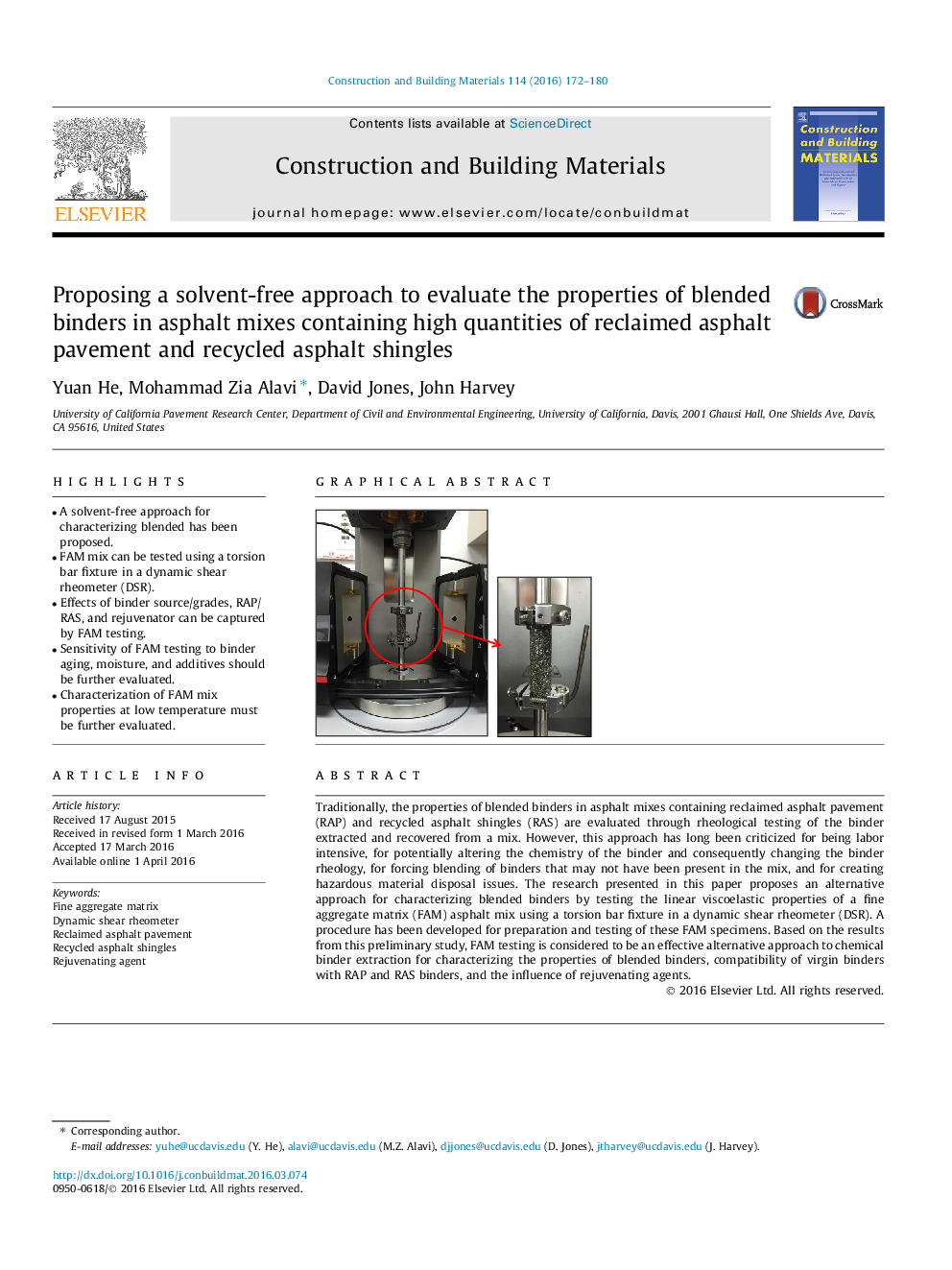| Article ID | Journal | Published Year | Pages | File Type |
|---|---|---|---|---|
| 255972 | Construction and Building Materials | 2016 | 9 Pages |
•A solvent-free approach for characterizing blended has been proposed.•FAM mix can be tested using a torsion bar fixture in a dynamic shear rheometer (DSR).•Effects of binder source/grades, RAP/RAS, and rejuvenator can be captured by FAM testing.•Sensitivity of FAM testing to binder aging, moisture, and additives should be further evaluated.•Characterization of FAM mix properties at low temperature must be further evaluated.
Traditionally, the properties of blended binders in asphalt mixes containing reclaimed asphalt pavement (RAP) and recycled asphalt shingles (RAS) are evaluated through rheological testing of the binder extracted and recovered from a mix. However, this approach has long been criticized for being labor intensive, for potentially altering the chemistry of the binder and consequently changing the binder rheology, for forcing blending of binders that may not have been present in the mix, and for creating hazardous material disposal issues. The research presented in this paper proposes an alternative approach for characterizing blended binders by testing the linear viscoelastic properties of a fine aggregate matrix (FAM) asphalt mix using a torsion bar fixture in a dynamic shear rheometer (DSR). A procedure has been developed for preparation and testing of these FAM specimens. Based on the results from this preliminary study, FAM testing is considered to be an effective alternative approach to chemical binder extraction for characterizing the properties of blended binders, compatibility of virgin binders with RAP and RAS binders, and the influence of rejuvenating agents.
Graphical abstractFigure optionsDownload full-size imageDownload as PowerPoint slide
